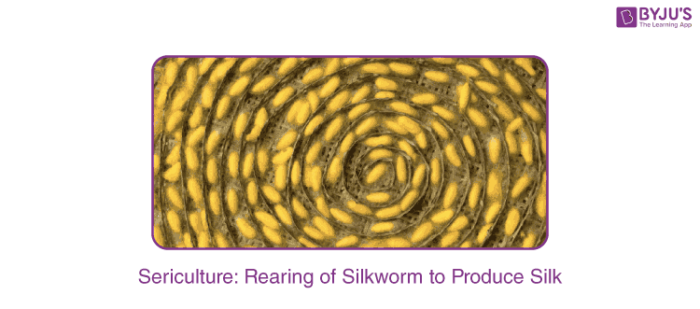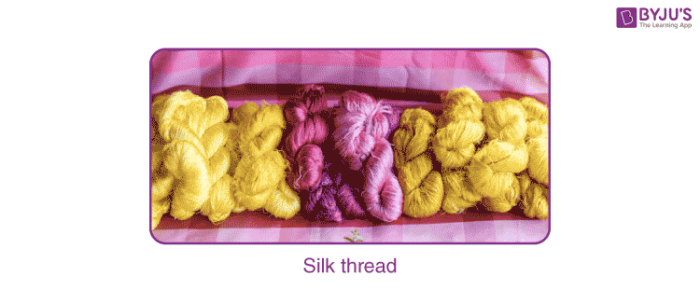The rearing of silkworms to produce raw silk is called sericulture. In this process, silkworms are reared at appropriate temperatures and humidity to get silk threads from cocoons.

Sericulture
Rearing of Silkworm: In the beginning, the female silk moth lays hundreds of eggs. These eggs are stored over clean paper or a piece of cloth. These eggs are then sold to the silkworm farmers. The farmers then keep the eggs under the accurate temperature and humidity in a clean place. They are warmed to the most appropriate temperature to hatch eggs to produce larvae or caterpillars. This process is done when the mulberry trees have a fresh crop of leaves. The caterpillar eats these mulberry leaves day and night and it grows in size.
Bamboo trays are used to keep these caterpillars and some freshly chopped mulberry leaves are kept in the tray. After 30-40 days approximately the caterpillars stop eating the leaves and then moves inside the small chambers in the bamboo trays to spin cocoons. These are produced by the secretion of the liquid protein from their salivary glands. Small racks are given in the trays so that the cocoons get attached to those racks. Silk moths are developed inside the cocoons.
Processing Silk from Cocoons: These cocoons are used to obtain silk threads. When the cocoons are exposed to the sun or steam or boiled, the silk fib gets separated. This process of getting silk threads from the cocoons to use as a silk fabric is known as reeling of the silk. Reeling of the silk is carried out by special machines. These machines unwind the fibres of silk or threads from the cocoon. Silk fibres are then converted into silk threads to make different kinds of silk fabrics like silk sarees, etc. by the weavers.

This was just a brief layout about the sericulture. To know more about the process of obtaining silk from silkworms kindly visit BYJU’S.

Comments